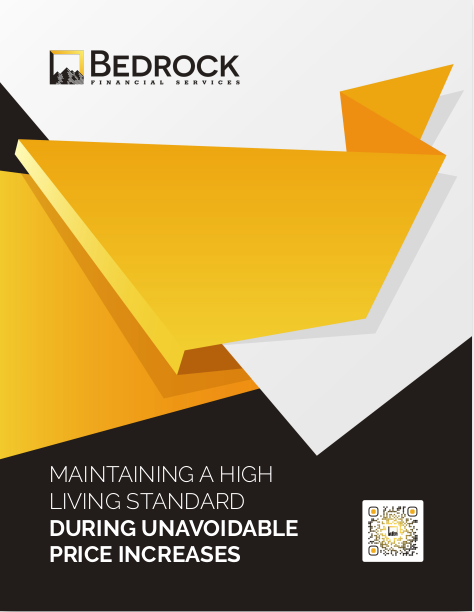Key Takeaways
-
Silent client exits are rarely about pricing—they’re usually about unmet expectations and broken trust.
-
Proactively strengthening communication and refining client touchpoints can significantly reduce silent churn.
The Silent Goodbye: It’s Not About the Price
You know the routine. One moment, a client is replying to emails, picking up your calls, and happily discussing policy renewals. Then, silence. No formal goodbye. No angry email. Just gone.
In 2025, this quiet departure is more common than ever. But despite how it feels, it’s not usually about cost. Clients rarely leave because they found something cheaper. They leave because they felt something was missing. And most of the time, they don’t tell you what it was.
Understanding these silent exits isn’t just about retaining business—it’s about building stronger, more sustainable relationships that drive long-term growth.
You’re Competing Against Convenience, Not Just Competitors
Modern clients don’t compare you to the agent down the street—they compare you to their favorite app. The digital shift means expectations are higher than ever. If your onboarding is clunky, your responses slow, or your updates inconsistent, it signals friction.
Clients today expect:
-
Real-time responses (or close to it)
-
Streamlined digital experiences
-
Proactive communication
-
Personalized interactions
If your processes feel stuck in 2020, you risk silent churn. They may not complain—but they will leave.
The First 90 Days Define the Relationship
A client’s perception of you is solidified early. Research from the past few years shows that most clients decide whether to stay with a service provider within the first 90 days. That’s your runway. If that initial phase is rocky, even minor issues later on will be viewed through a critical lens.
During those 90 days, your focus should be:
-
Fast onboarding: Eliminate unnecessary steps and delays
-
Clear communication: Set expectations early and revisit them
-
Value delivery: Show them they made the right choice
Many silent exits can be traced back to a rough start that never got fully repaired.
Misalignment Between What’s Promised and What’s Delivered
When a client feels that what they were sold doesn’t match what they’re experiencing, trust erodes. Quickly.
This disconnect can show up as:
-
Policy options that were glossed over in the pitch
-
Benefit expectations that aren’t clarified until claims arise
-
Follow-ups that never happen
In the insurance world, perceived misrepresentation—even if unintentional—feels like betrayal. Once that trust breaks, most clients don’t voice their concerns. They just disappear.
Audit your onboarding and sales processes. Make sure everything you promise is clearly documented and repeatable across all clients.
Communication Frequency and Format Matter More Than Ever
It’s not just how often you check in—it’s how you do it.
In 2025, clients are overwhelmed with noise. Generic newsletters and impersonal updates get buried. Instead, clients want:
-
Short, clear, and relevant messages
-
Options for text, email, or even chat-based support
-
Predictable communication (like quarterly check-ins)
Silence feels like indifference. A client who hears nothing from you for six months may start wondering if you’re still there—or if you still care.
You Didn’t Ask the Right Questions
Retention often fails because the wrong questions are being asked—or none at all. Asking, “Is everything okay?” usually gets a polite yes.
Try asking:
-
“How could we make this experience easier for you?”
-
“Have any of your needs changed since we last spoke?”
-
“Are there any parts of your plan that feel confusing or unhelpful?”
These open-ended questions open doors. They catch issues before they turn into exits. And they show clients you’re still earning their trust.
Touchpoints Fell Off After the Sale
Your job doesn’t end with a policy sale. In fact, it’s just beginning.
If your contact cadence slows down after onboarding or policy finalization, the relationship enters a passive phase. And passivity is the quiet killer.
Make your retention strategy active:
-
Calendar follow-ups every 3–6 months
-
Trigger check-ins for major life events or renewal cycles
-
Use automated reminders, but follow up personally when needed
Clients stay with agents who stay visible.
You’re Not Offering the Right Kind of Value
In a world where every service is being scrutinized for relevance, you need to continually prove your value.
That doesn’t mean offering discounts or free add-ons. It means demonstrating:
-
Ongoing education about policies or market shifts
-
Help with paperwork, renewals, or claims
-
Strategic planning for life changes like retirement or new dependents
If your client only hears from you during renewals, they’ll eventually ask: Why do I need this person at all?
Feedback Loops Are Missing
It’s easy to assume clients are happy if they’re not complaining. But silence is not always a sign of satisfaction.
You should regularly collect:
-
Quick surveys (2–3 questions max)
-
Optional satisfaction scores after key touchpoints
-
Anonymous exit interviews if a client leaves
Even if the participation rate is low, the insights can be enormous. Silent exits become loud lessons.
Clients Want to Feel Remembered, Not Just Managed
Clients want to feel like more than a policy number. They notice when you remember a birthday, a child’s name, or a preference for texting over calling.
Use a lightweight CRM (or even just a spreadsheet) to track:
-
Personal milestones
-
Communication preferences
-
Last contact date and topic
Personalization isn’t optional anymore—it’s expected.
Staff Interactions Reflect Your Entire Brand
If you work with assistants or a team, their behavior matters just as much as yours.
One rude call, one confusing email, one dropped handoff can undo months of goodwill. Clients rarely differentiate between the agent and the brand—they see one unified experience.
Invest in:
-
Training on tone and client experience
-
Templates that reflect your brand voice
-
Clear SOPs for how handoffs happen
In 2025, service quality is often the tie-breaker. Make sure yours is consistent, regardless of who answers the phone.
They Outgrew You—and You Didn’t Notice
Sometimes, a client’s life evolves, and your services no longer align. Maybe they started a business, inherited property, or had a major life event. If you don’t proactively reassess their needs, they’ll find someone who will.
Your annual review process should include:
-
Life updates (marriage, new home, dependents, etc.)
-
Financial changes
-
Shifts in risk tolerance or lifestyle
Staying relevant means growing with your client.
Don’t Let Them Leave Quietly
If you sense a client is drifting—or you haven’t heard from them in over six months—it’s worth reaching out. Not with a sales pitch, but with a genuine check-in.
A message like, “I just realized we haven’t touched base in a while—anything I can help with?” can rekindle the connection.
Even if the client confirms they’ve moved on, you’ll at least learn why. That insight is priceless.
Strengthening Relationships Is the New Retention Strategy
The days of passive renewals are over. Silent exits are preventable, but only if you treat client relationships as living systems that need regular care.
You don’t need to guess what went wrong. You need to build systems that ensure nothing gets missed. Stronger onboarding, smarter touchpoints, clearer communication, and authentic follow-ups all create the kind of experience clients won’t want to leave.
And if they ever do leave? At least they’ll say goodbye—and give you a chance to do better.
Build Stronger Client Bonds with the Right Support
If you’re ready to reduce silent churn and increase lifetime value, the next step is to align with the right tools and strategies. That’s exactly what Bedrock Financial Services offers.
From automation tools to client communication templates to full-service CRM solutions, Bedrock equips professionals like you with what’s needed to stay present, responsive, and proactive—without adding to your plate.
Sign up with Bedrock Financial Services today and transform how you retain your clients in 2025.







